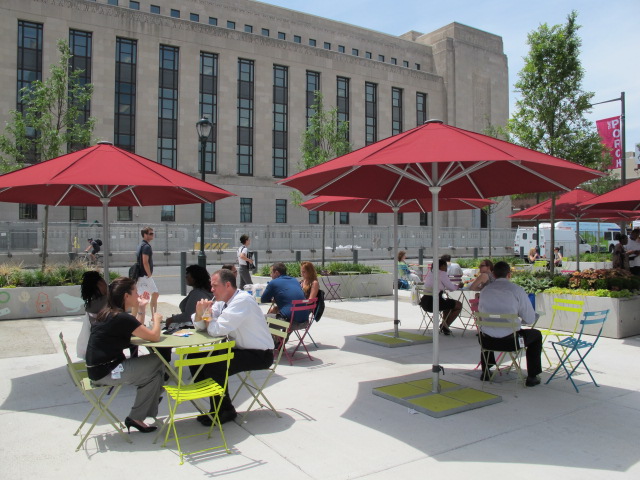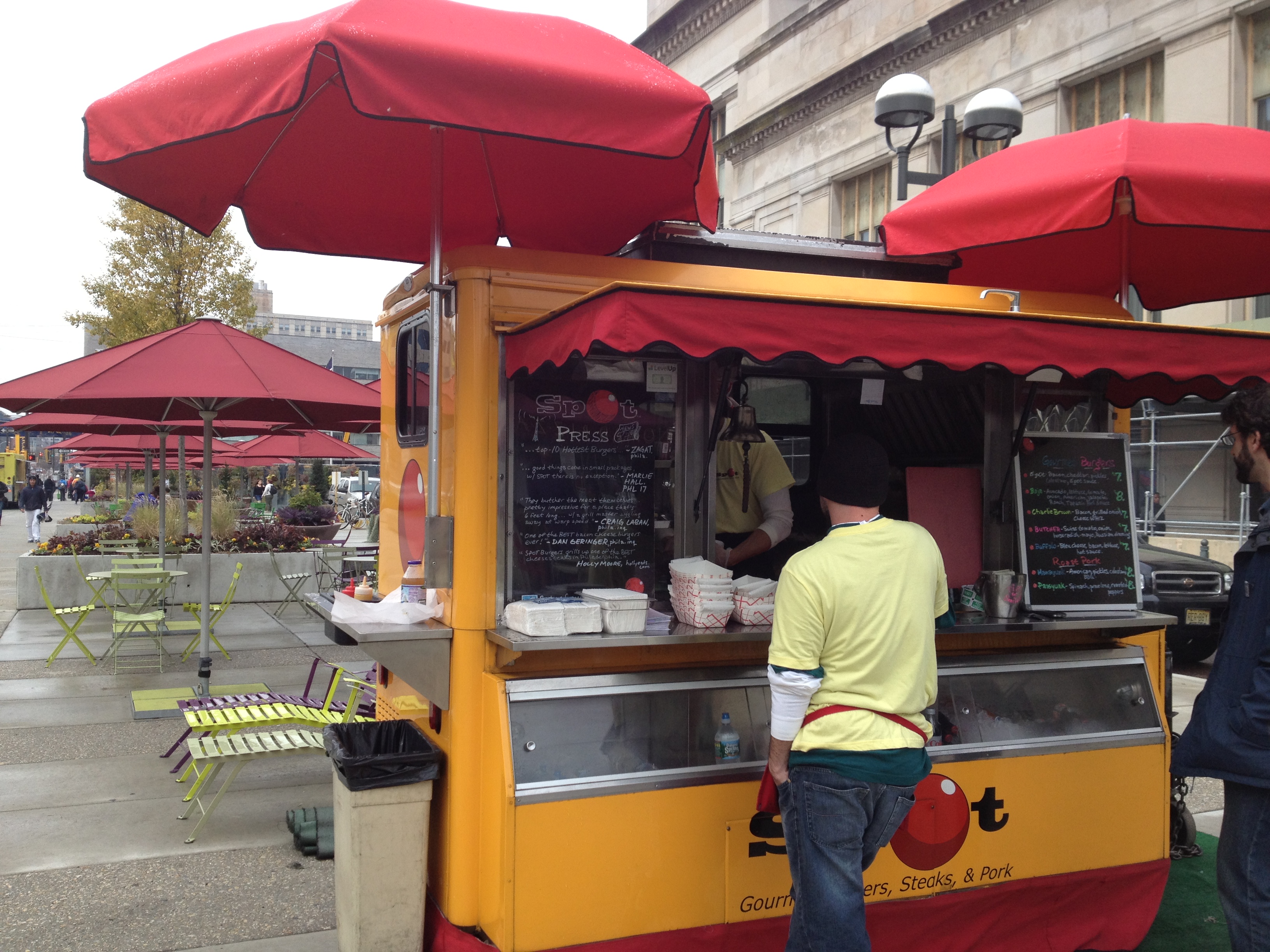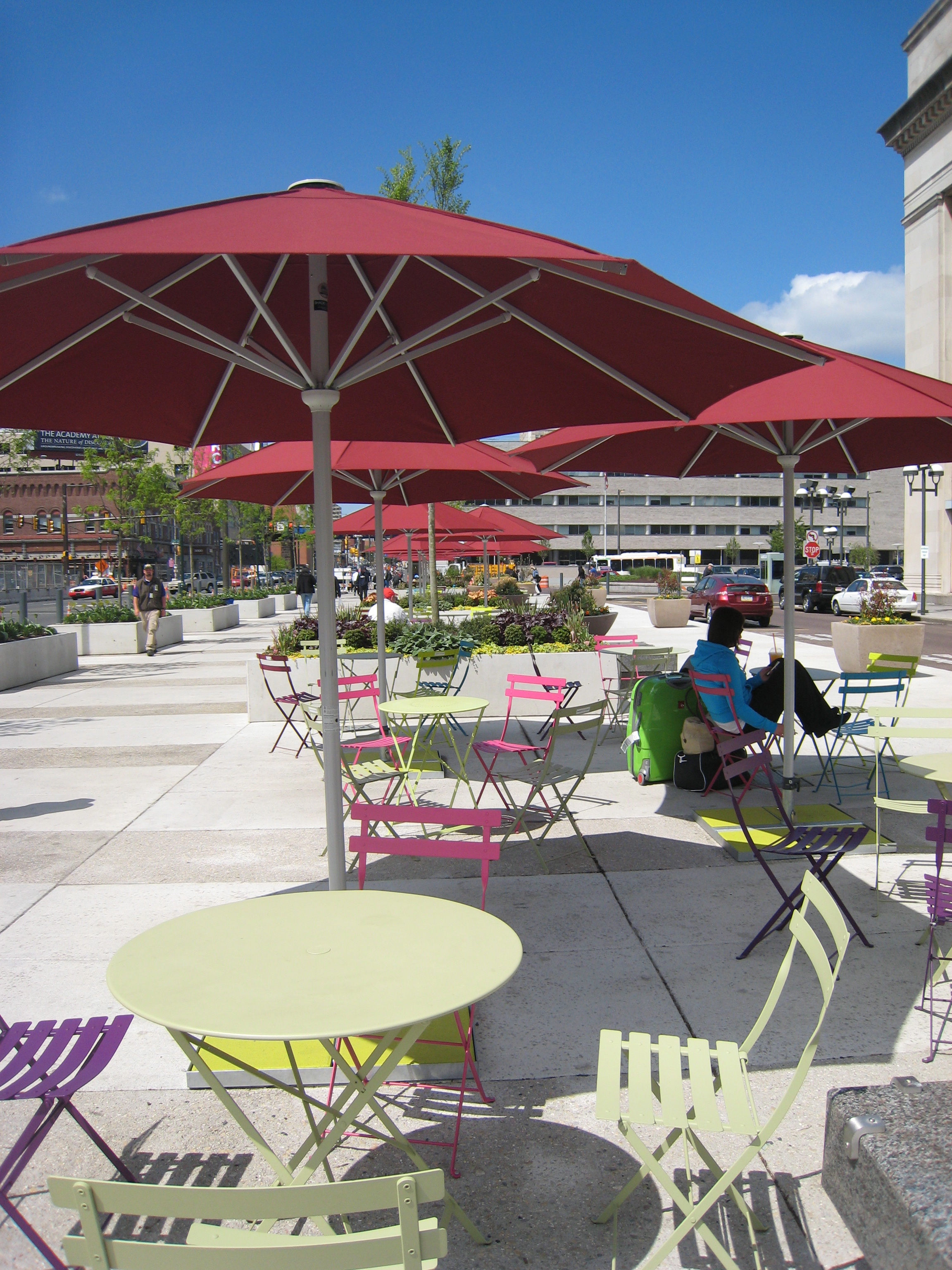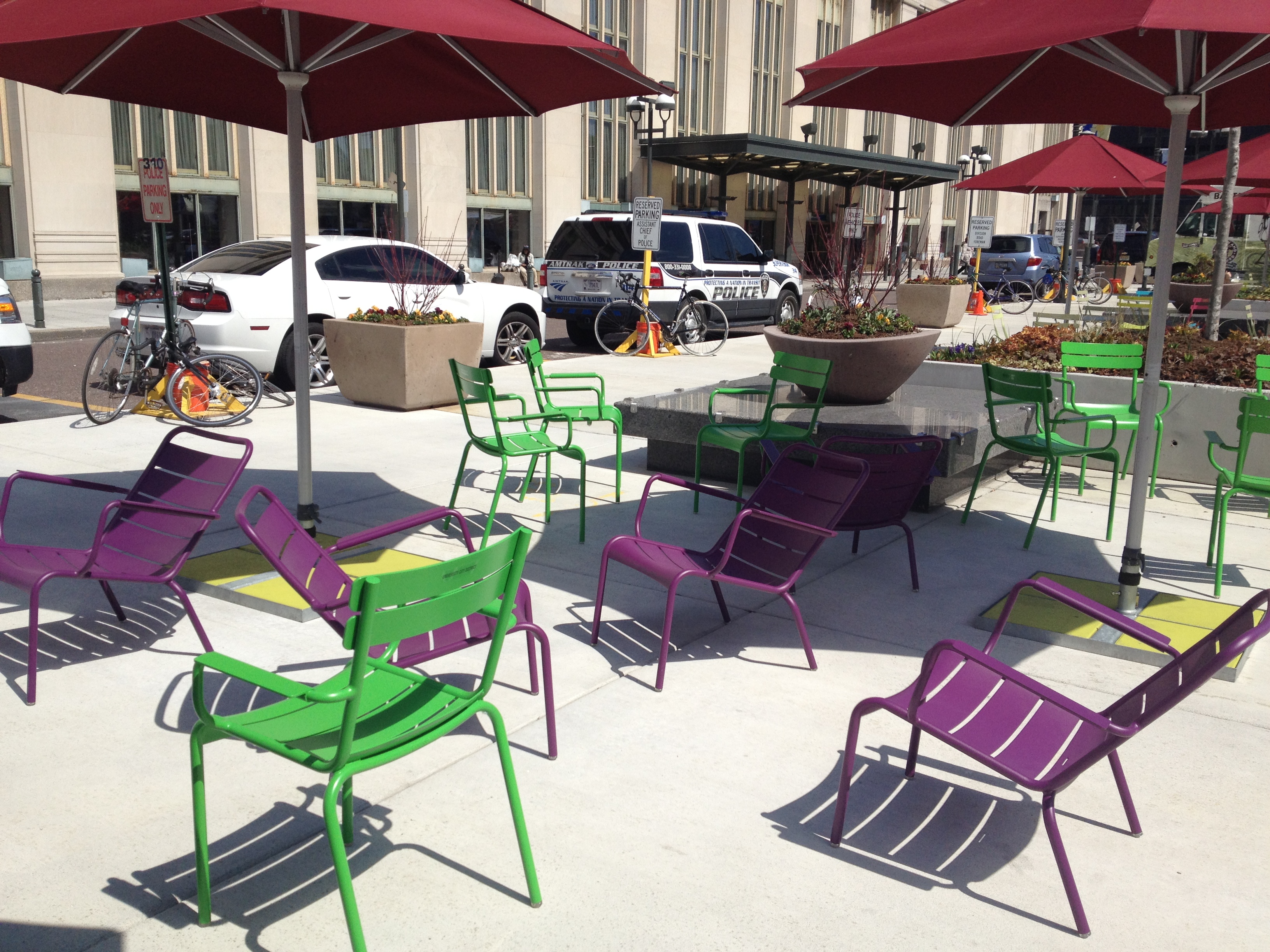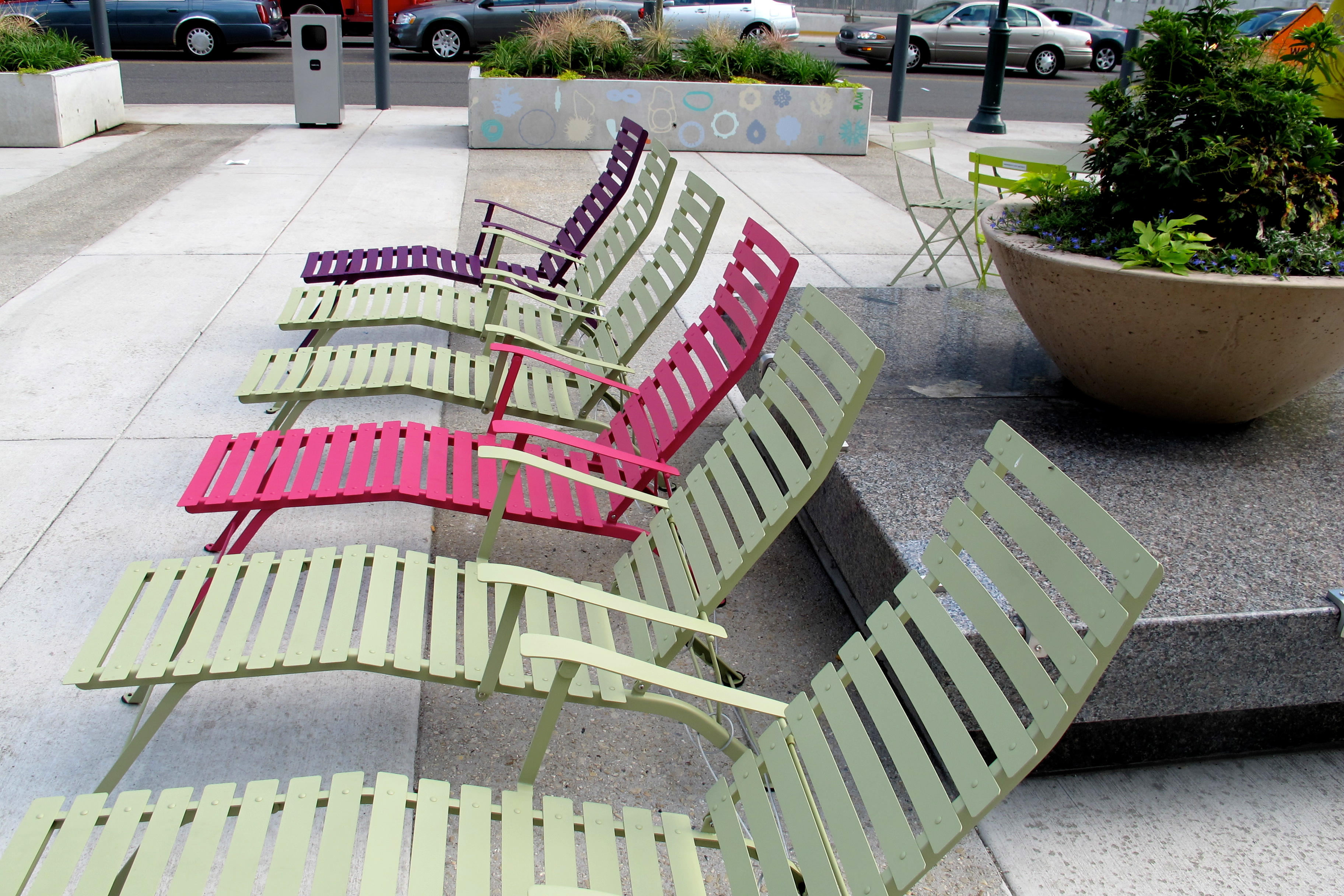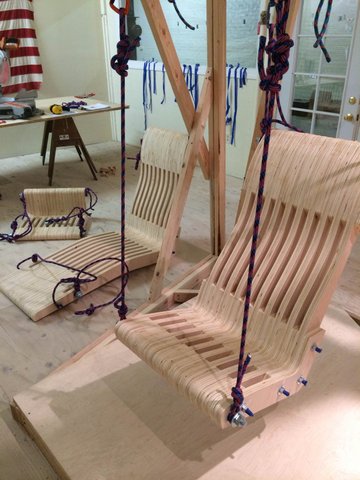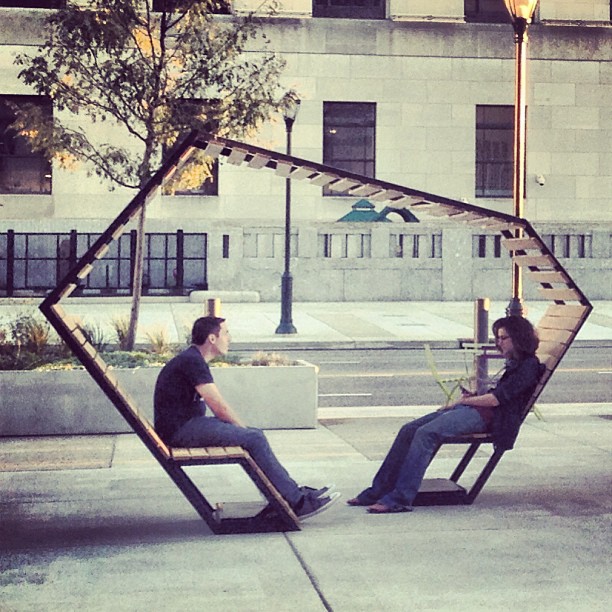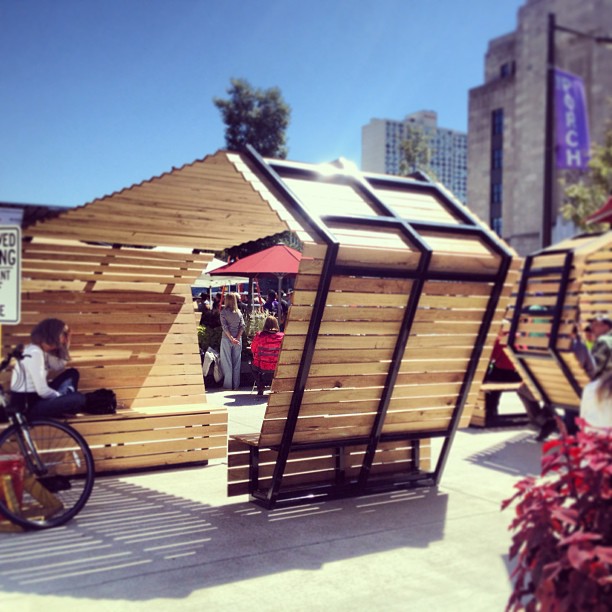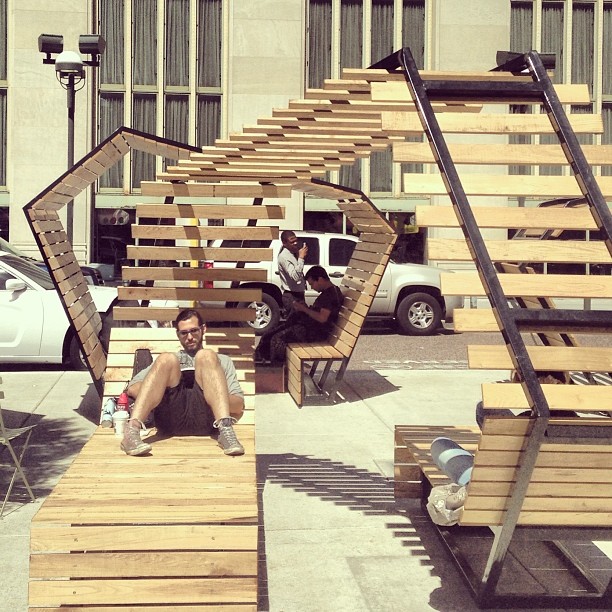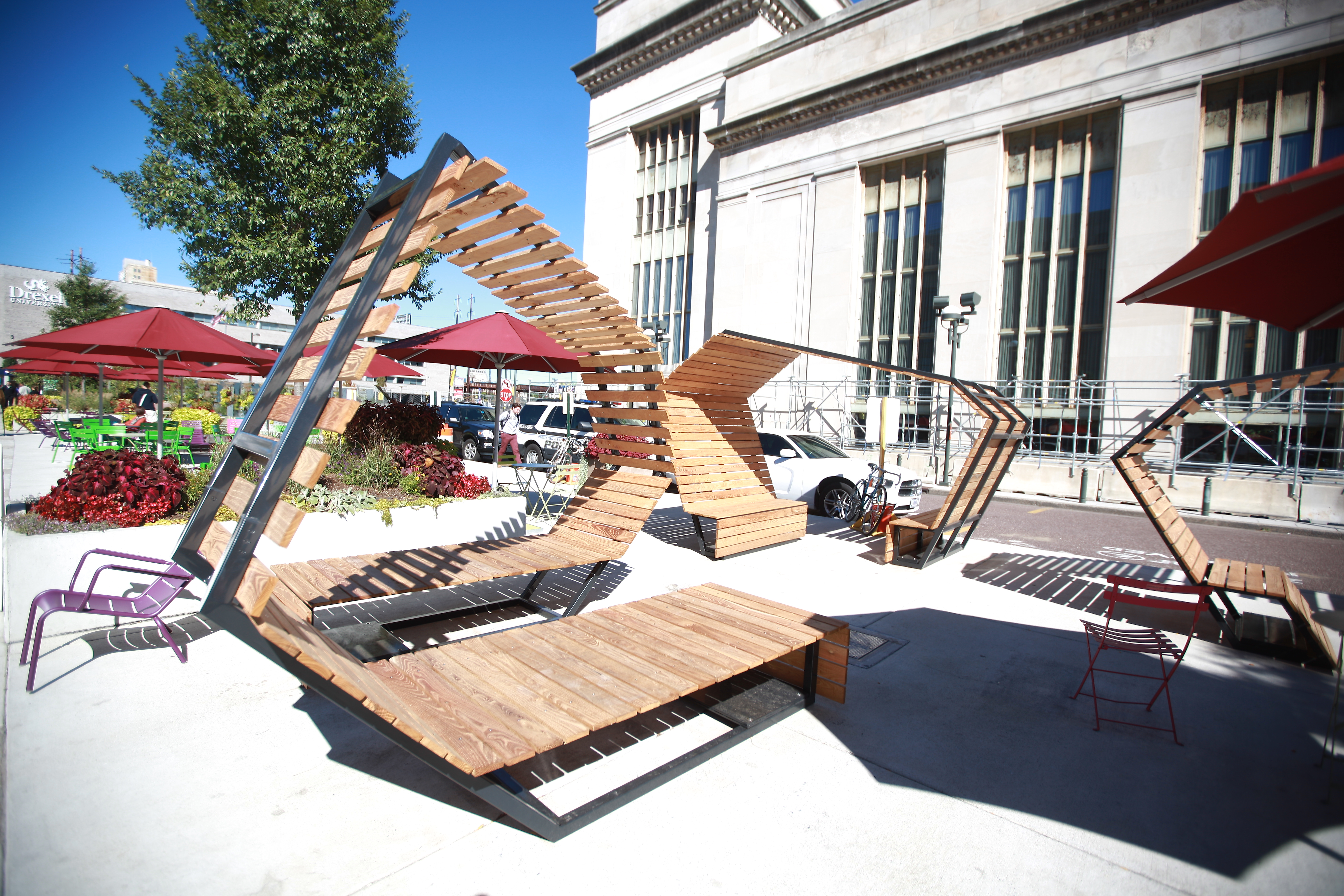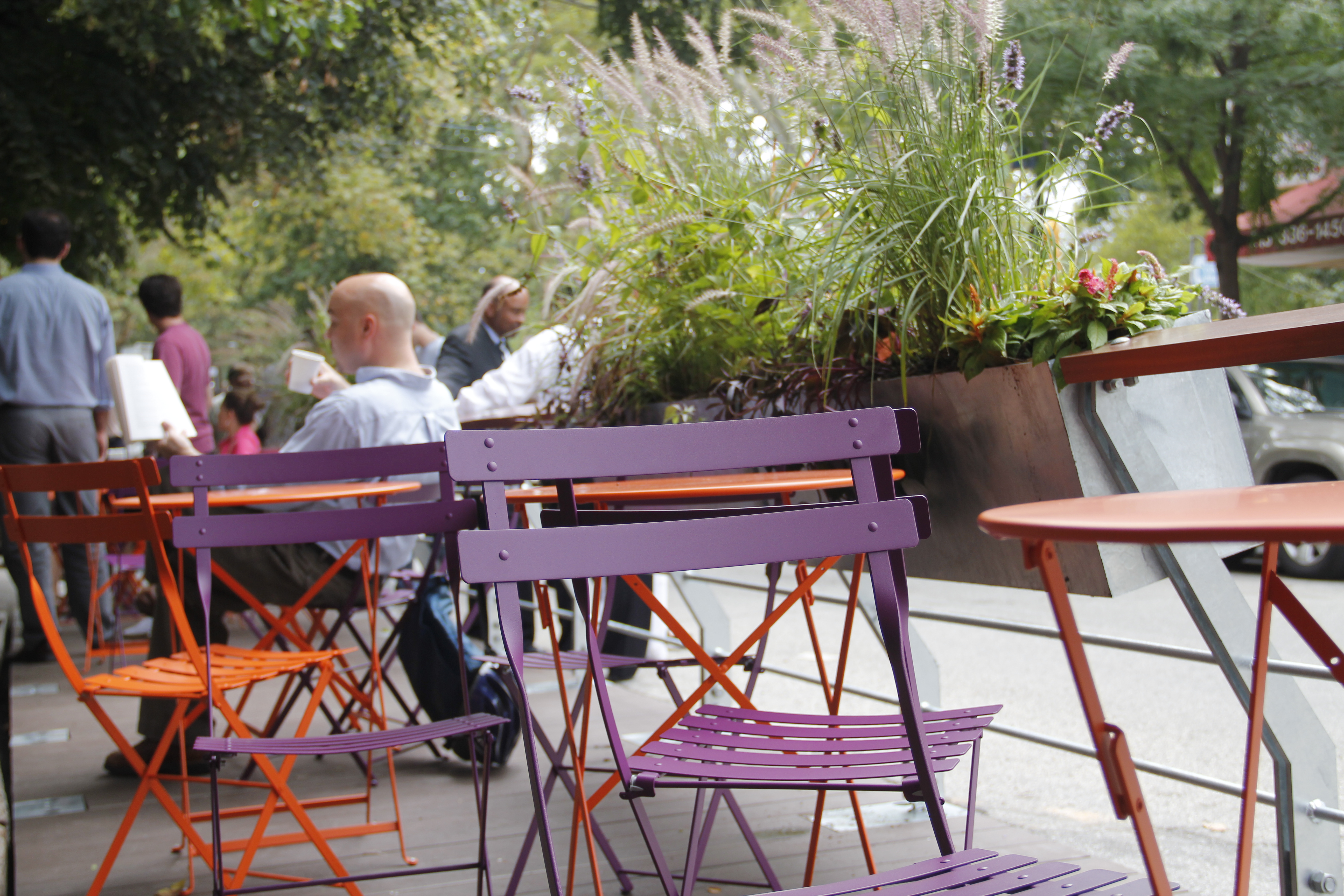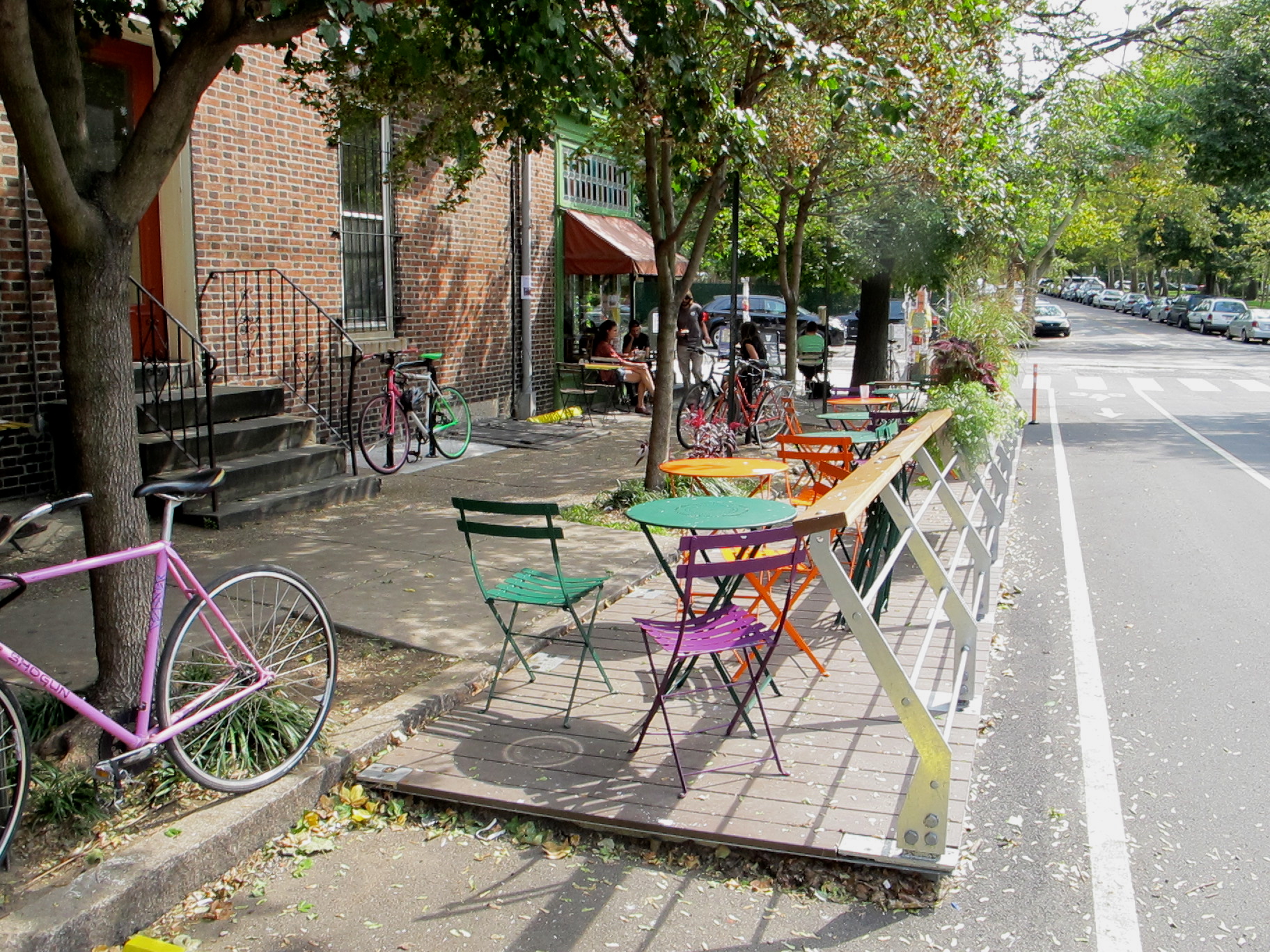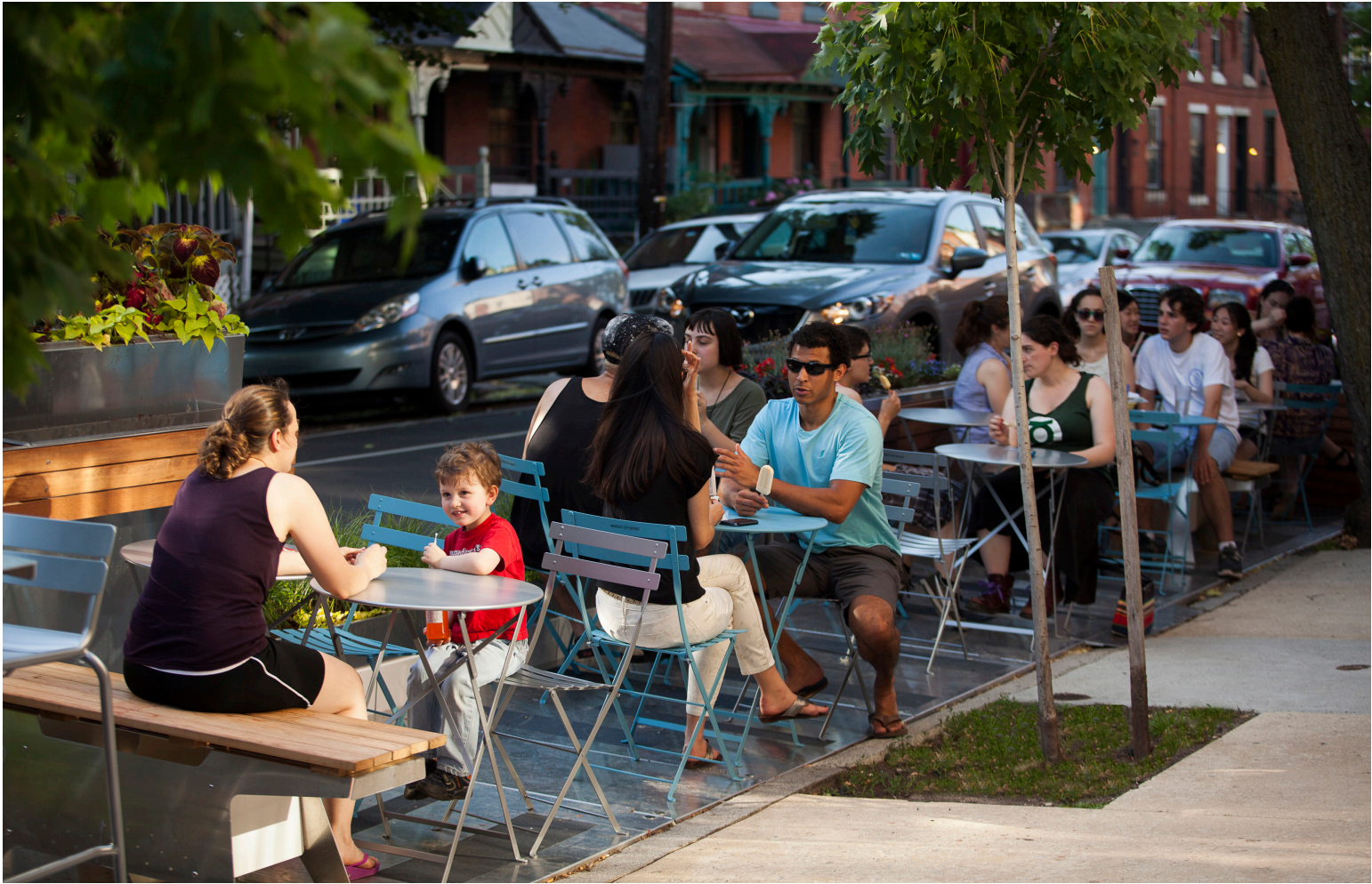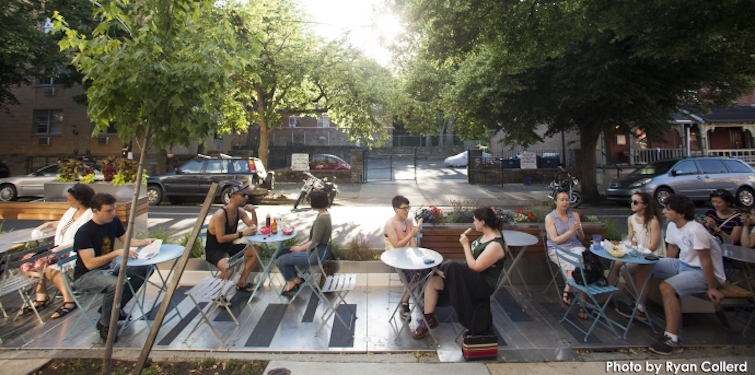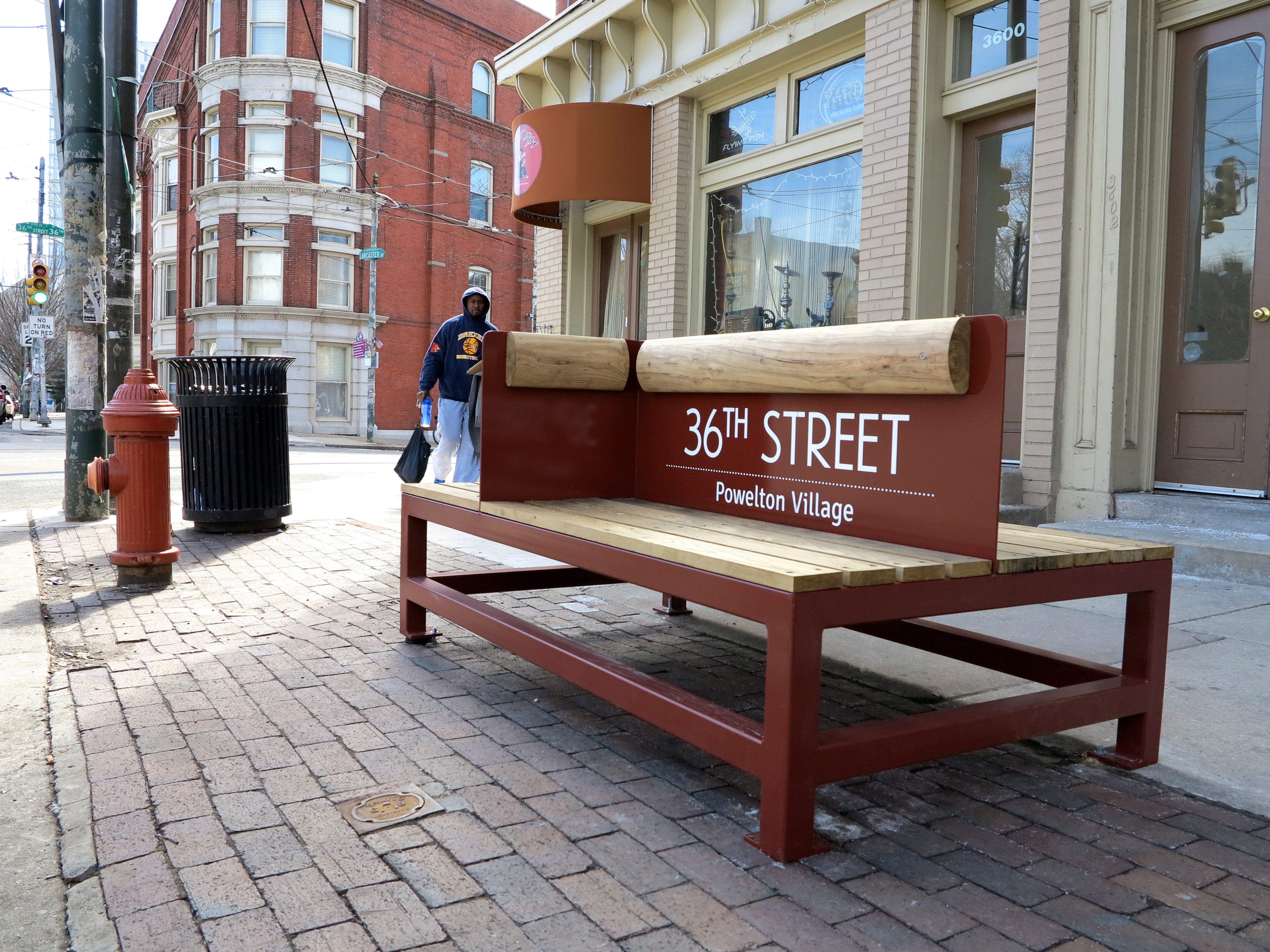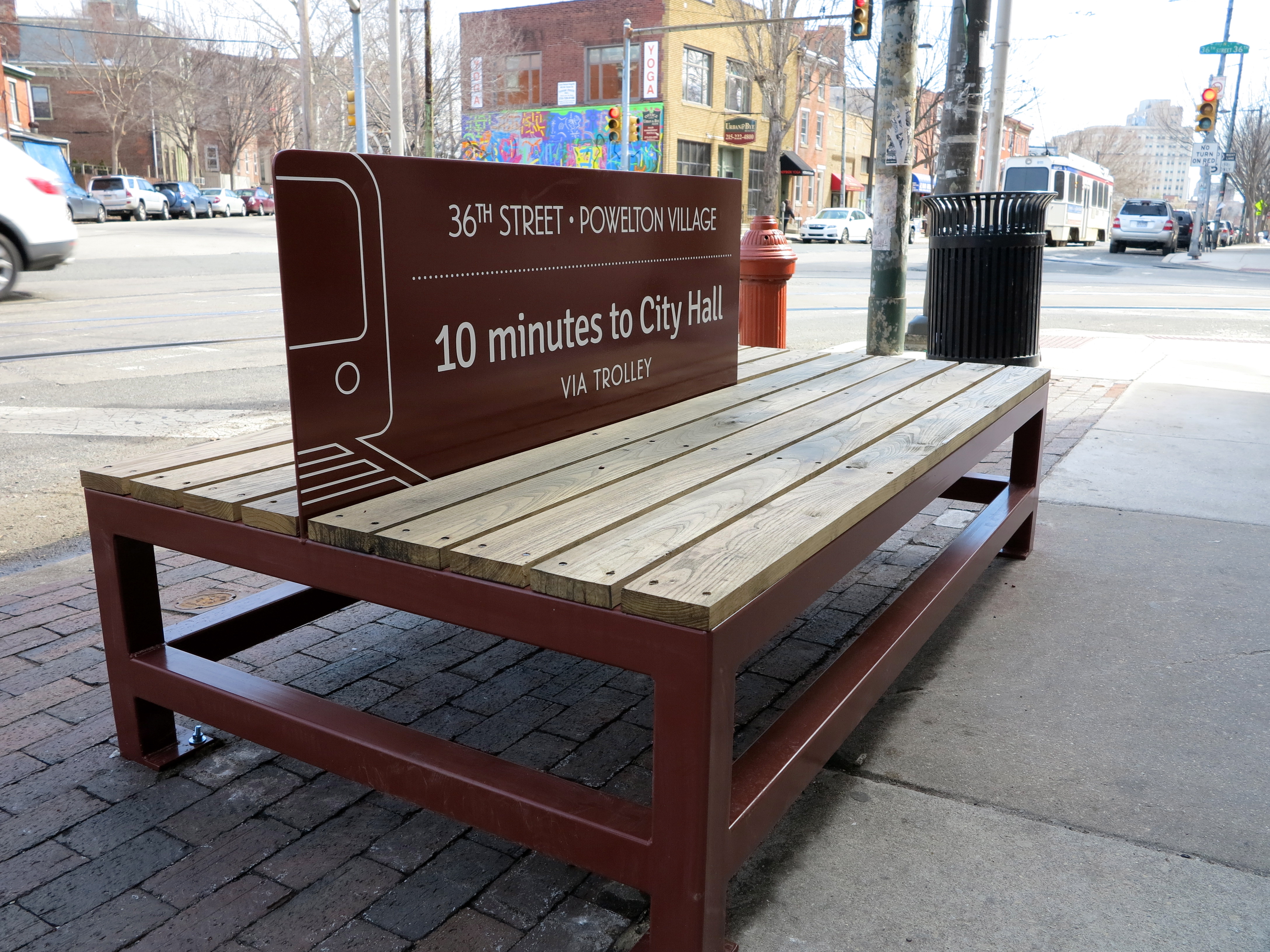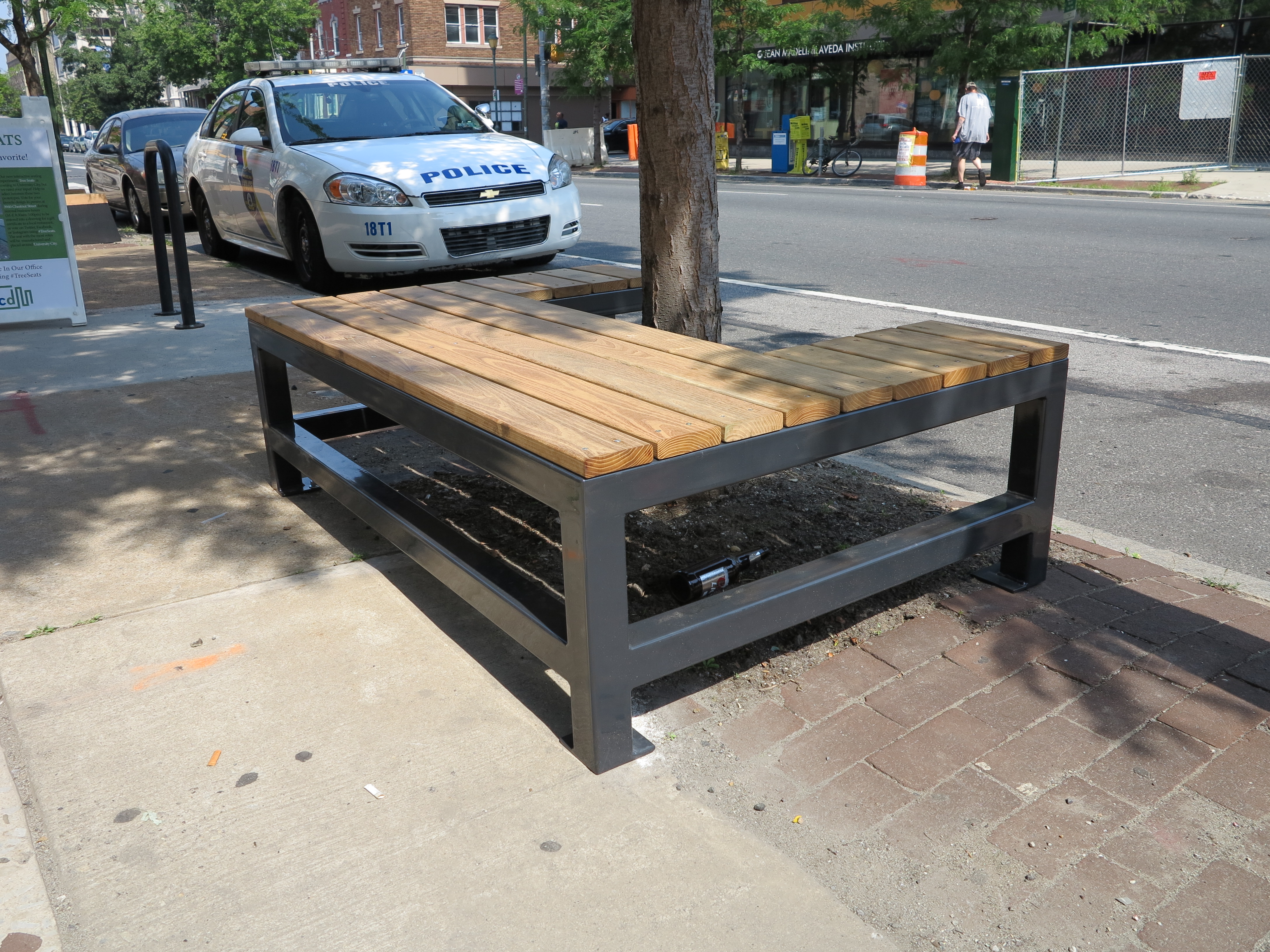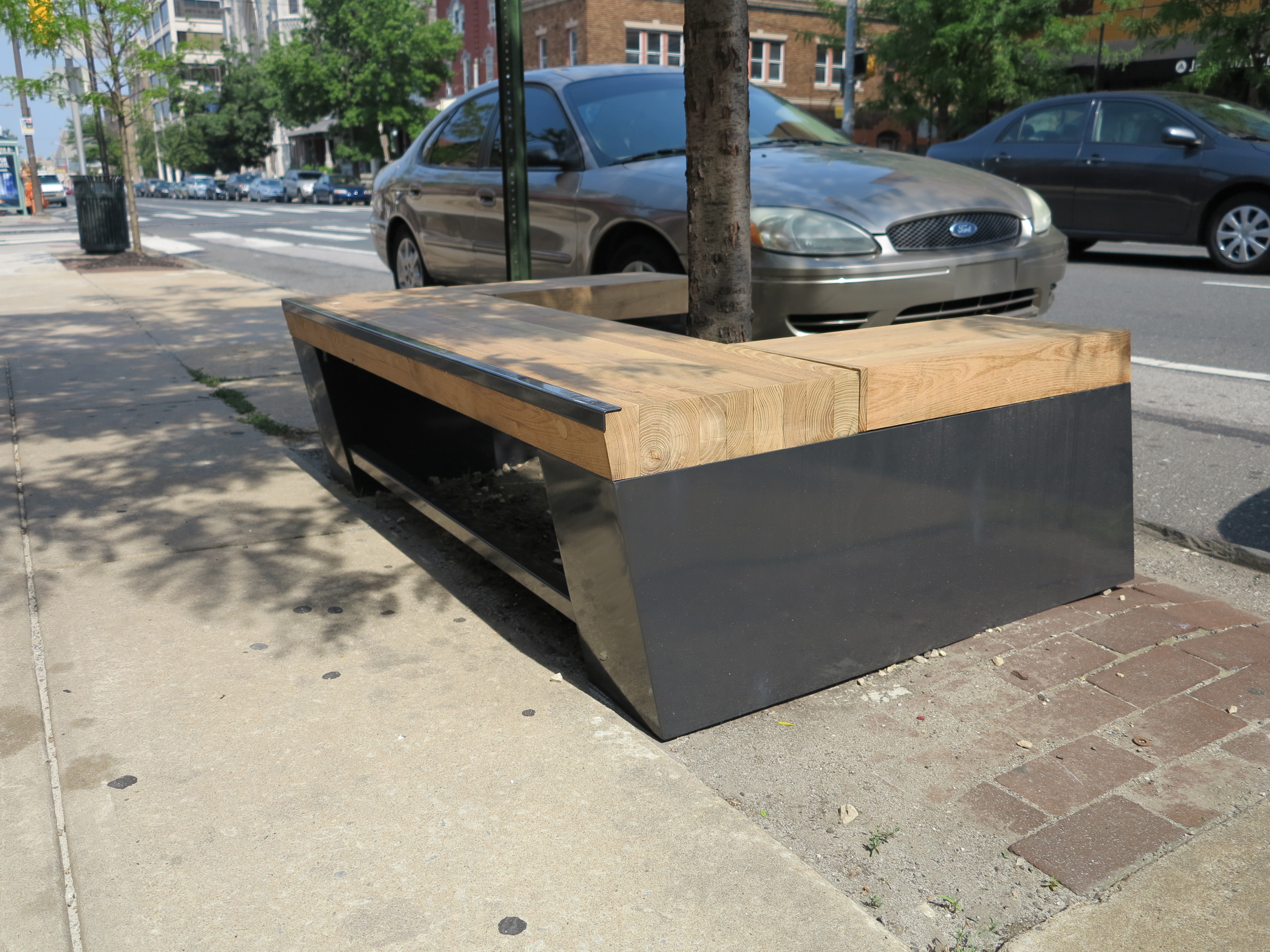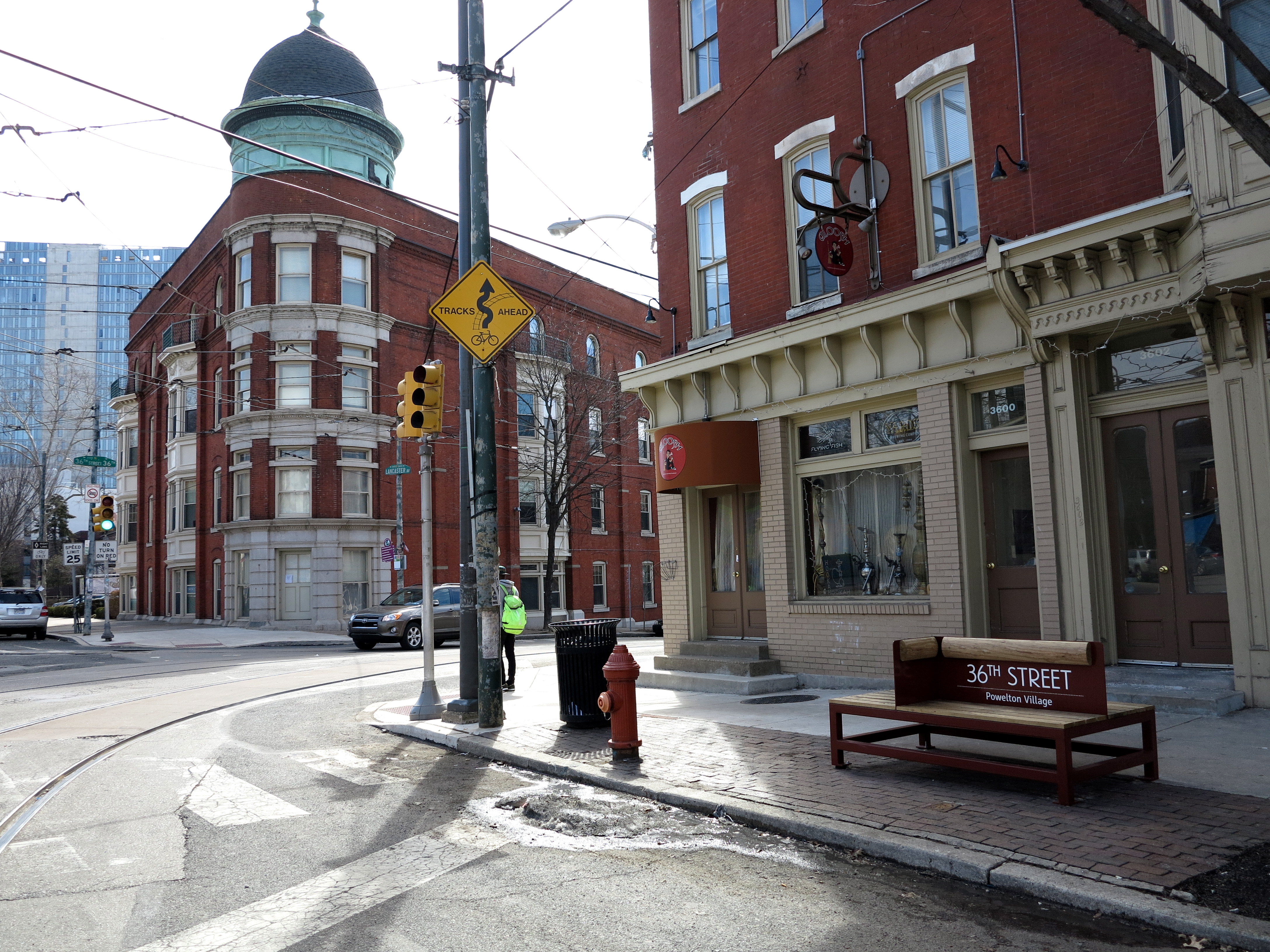University City: Living lab for public seating, placemaking
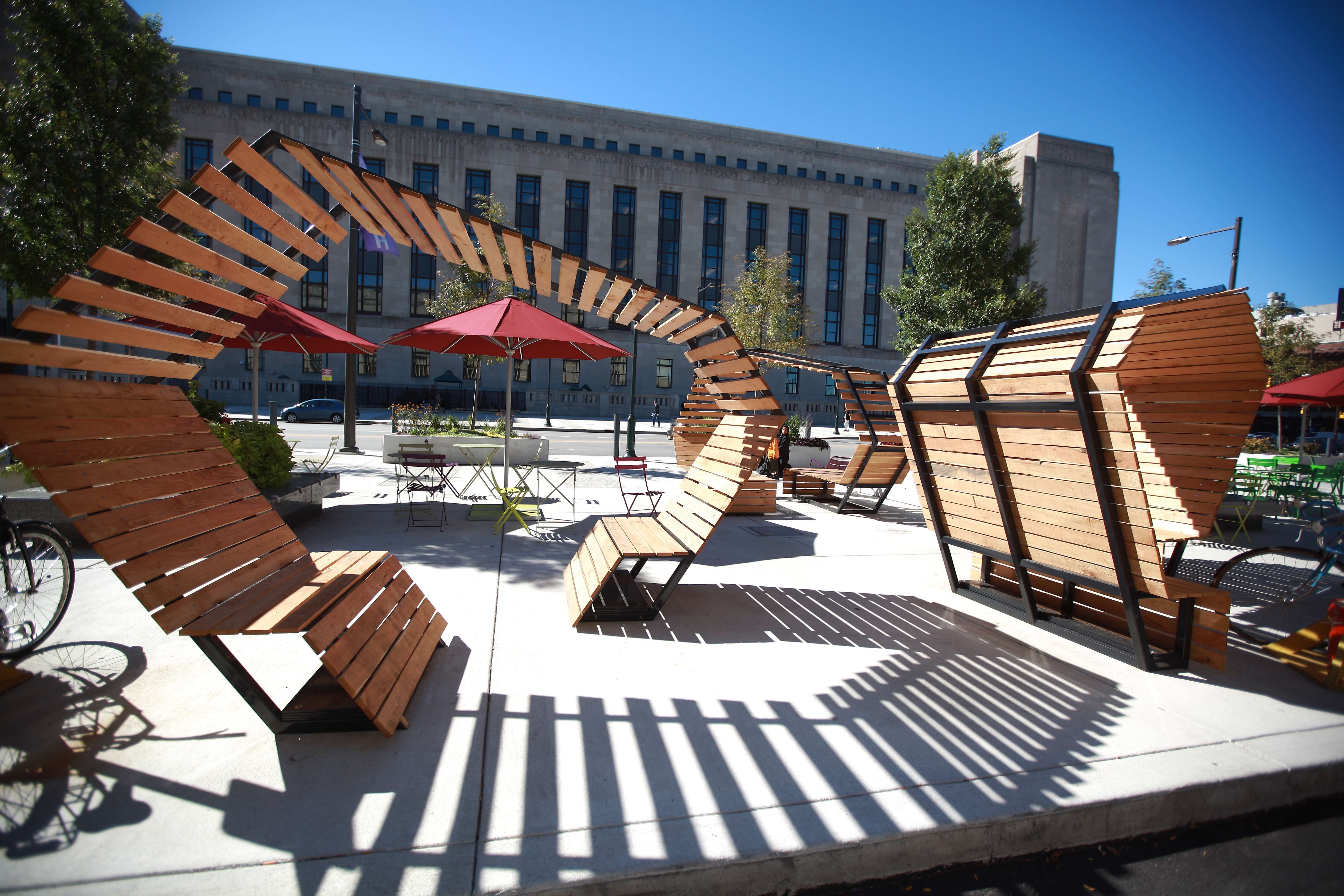
Prema Katari Gupta says she knew The Porch at 30th Street Station had become a bona fide public space when three different people yelled at her as she tried to carry a broken chair away from The Porch back to her office.
As University City District’s (UCD) Director of Planning and Development, Gupta spends a lot of time thinking about seating in the neighborhood’s public spaces. That’s a marked change from when Holly Whyte, the intellectual godfather of today’s public space renaissance, lamented decades ago, “The human backside is a dimension architects seem to have forgotten.”
Today we recognize that seating is a key to placemaking. Decent seating invites people to visit, linger, and enjoy public spaces in ways that animate our streets, parks, and plazas. That matters because the density and diversity of a public space’s social life are how we measure the health of our public realm.
Philly has joined the tribe of global cities that have gotten the message about placemaking, and a march of rainbow-colored movable furniture has cropped up adding casual flexibility to our public places. The city has made it easier to build parklets and pedestrian plazas on streets in every neighborhood. But no neighborhood in Philly has become more of a living lab for placemaking than University City, driven in large part by the hundreds of pieces of public furniture installed in different types of spaces by UCD.
“People are the prerequisite for a great public space,” said Gupta. “You could have the fanciest, most design-y public space … but if you don’t see other people enjoying it, that’s an empty experience.”
Through seating – from bistro sets in parklets and at The Porch at 30th Street Station to artistic curbside “social seating” – UCD has taken a deliberate, iterative, and relatively affordable approach to supporting a livelier public environment in University City.
Adding pieces of public furniture is more than an “urbanist lark,” Gupta notes. “Civic infrastructure makes a place competitive.”
UCD’s placemaking work also is intended to boost the neighborhood’s public safety by adding more “eyes on the street”, enhance community wellbeing by providing new gathering spaces, increasing transit ridership by making the wait more comfortable, and boosting the economic environment through an amenity-rich public realm.
The goals are clear and UCD has approached this work through a spirit of curiosity and experimentation true to its neighborhood, followed by adaptation based on how people respond to new interventions.
“In all the things we’ve done I think the boldest experiment are the movable tables and chairs at The Porch,” Gupta said.
Movable furniture wasn’t too common in Philadelphia back in 2011 and the concept faced serious doubters in the case of The Porch. Even though movable public furniture was already popular in other cities, some argued that no one would want to spend time outside 30th Street Station and anything not bolted down would be stolen. But movable café seating had enough advantages that UCD was willing to try. People tend to like movable furniture because it allows users to personalize their experience of a public space, even by moving a chair just a few inches, to enjoy shade or sun, sit close to a friend, or to better people watch. A little freedom goes a long way toward making a space inviting. So far the experiment has paid off.
UCD has closely observed and reported on how people use The Porch since it launched, collecting and analyzing data weekly.
Of Porch users surveyed by UCD in 2012, 71% felt that the new tables and chairs were the most important improvements. Success these days, Gupta notes, at The Porch is measured less in terms of butts in seats and more about the percentage of tables being occupied: People tend not to share the intimate café tables with strangers.
The Porch has more than 200 pieces of furniture, and each year the mix of seating options shifts. During the 2012 season lounge chairs were added. Next came sturdier “Luxemburg” chairs, which UCD has observed people spend a longer time sitting in because they’re larger and more comfortable.
This season Groundswell – the design firm behind popular seasonal spaces like Spruce Street Harbor Park – will add some new design flourish to the Porch, in the hopes of making it feel more inviting during off-peak times like morning and evening when fewer people gather there. Also new this year will be several “Porch Swings” – slatted wooden swings that are currently being prototyped by Gehl Studios. They’re the outgrowth of an ArtPlace grant UCD received to incorporate functional art into The Porch.
The swings are not UCD’s first foray into whimsical seating. In 2013 UCD built and tested LoopedIn, a type of “social seating”: Three different curvaceous metal and wood slat benches with sections facing one another. The goal was to encourage social interactions by making room for different people to comfortably use these seats at the same time.
“LoopedIn was designed by Interface Studio Architects to grab people’s attention and to accommodate groups as well as individuals and they did exactly that,” said UCD’s Capital Projects Manager Nate Hommel. LoopedIn moved all over public spaces in University City, from The Porch to Clark Park, Drexel Park to Locust Walk. (LoopedIn’s permanent home will be announced soon.) Each location’s users were different, but Hommel’s favorite were preschoolers at 50th and Baltimore and at Penn, “they turned out to be the most creative and social users of the seats.”
UCD’s “social seating” has also been deployed on the streets of West Philly through parklets, pedestrian plazas, and curbside seats.
UCD installed the city’s first parklet in 2011, replacing in-street parking with miniature public space, and UCD’s recent study of parklet life revealed highly social public spaces, with eating and talking as the dominant activities – two things that good seating supports. They’ve contributed to both sidewalk life and the bottom lines of nearby businesses.
“I love the way some of our parklets have turned into community front stoops where people run into people they know and hang out there,” said Gupta. “We want people to enjoy street life and think [parklets are] an economically rational use of the public realm.”
Last year UCD prototyped “Tree Seats,” benches that wrap around street trees that offer more seating than your average curbside bench but less than a parklet. In subtle ways the tree seats are also about making it more comfortable for people to wait for the bus or trolley in University City.
The newest “social seating” incarnation to hit University City’s streets is a custom three-sided transit bench installed last month at the five-way intersection where 36th Street and Lancaster Avenue cross. The low-slung bench made of black locust wood and painted metal allows people to sit facing the street, corner, or sidewalk, and features basic transit information. It’s designed to be both a micro-community space as well as promote transit ridership by listing the quick 10-minute travel time to City Hall via the Route 10 trolley.
“We want to start conversations,” Gupta said, by both grabbing the attention of passersby and by giving strangers room to sit comfortably together and make small talk.
Beyond starting that conversation, public seating experiments offer a chance to change the tone of a neighborhood’s public environment. Given the pace of new development in University City, placemaking interventions like the ones UCD has tried could influence the public realm around new projects.
“Cities are becoming more hospitable and less defensive,” Gupta said. “There is a huge, huge, huge unmet demand for pedestrian amenities and great places.”
WHYY is your source for fact-based, in-depth journalism and information. As a nonprofit organization, we rely on financial support from readers like you. Please give today.



